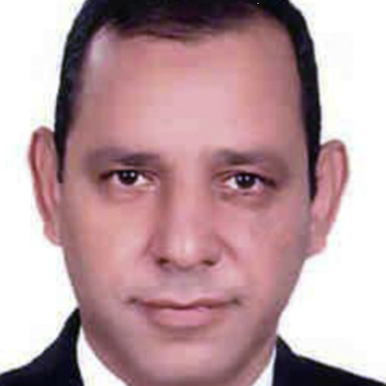International Journal of Information Technology and Computer Science (IJITCS)
IJITCS Vol. 11, No. 8, 8 Aug. 2019
Cover page and Table of Contents: PDF (size: 458KB)
Application of an Enhanced Self-adapting Differential Evolution Algorithm to Workload Prediction in Cloud Computing
Full Text (PDF, 458KB), PP.33-40
Views: 0 Downloads: 0
Author(s)
Index Terms
Cloud computing, Workload prediction, Resource scaling, Artificial neural network, Differential evolution
Abstract
The demand for workload prediction approaches has recently increased to manage the cloud resources, improve the performance of the cloud services and reduce the power consumption. The prediction accuracy of these approaches affects the cloud performance. In this application paper, we apply an enhanced variant of the differential evolution (DE) algorithm named MSaDE as a learning algorithm to the artificial neural network (ANN) model of the cloud workload prediction. The ANN prediction model based on MSaDE algorithm is evaluated over two benchmark datasets for the workload traces of NASA server and Saskatchewan server at different look-ahead times. To show the improvement in accuracy of training the ANN prediction model using MSaDE algorithm, training is performed with other two algorithms: the back propagation (BP) algorithm and the self-adaptive differential evolution (SaDE) algorithm. Comparisons are made in terms of the root mean squared error (RMSE) and the average root mean squared error (ARMSE) through all prediction intervals. The results show that the ANN prediction model based on the MSaDE algorithm predicts the cloud workloads with higher prediction accuracy than the other algorithms compared with.
Cite This Paper
M. A. Attia, M. Arafa, E. A. Sallam, M. M. Fahmy, "Application of an Enhanced Self-adapting Differential Evolution Algorithm to Workload Prediction in Cloud Computing", International Journal of Information Technology and Computer Science(IJITCS), Vol.11, No.8, pp.33-40, 2019. DOI:10.5815/ijitcs.2019.08.05
Reference
[1]A. Prasanth, “Cloud computing services: A Survey,” International Journal of Computer Applications, vol. 46, no. 3, pp. 25-29, 2012.
[2]A. Shawish, and M. Salama, “Cloud computing: paradigms and technologies,” in Inter-cooperative Collective Intelligence: Techniques and Applications, N. B. Fatos, Xhafa, eds., Springer-Verlag Berlin Heidelberg,1st edn., 2014, ISBN 978-3-642-35016-0, pp.39–67.
[3]K. Cetinski, and M. B. Juric, “AME-WPC: Advanced model for efficient workload prediction in the cloud,” J. Netw. Comput. Appl., vol. 55, no. 55, pp. 191–201, 2015.
[4]Y. Chen, A. Ganapathi, R. Griffith, and R. Katz, “Towards understanding cloud performance tradeoffs using statistical workload analysis and replay,” EECS, UC Berkeley, Tech. Rep., pp. 1-12, 2010.
[5]D. Ardagna, S. Casolari, M. Colajanni, and B. Panicucci, “Dual time-scale distributed capacity allocation and load redirect algorithms for cloud systems,” J. Parallel Distrib. Comput., vol, 72, no. 6, pp. 796–808, 2012.
[6]J. Yang, C. Liu, Y. Shang, B. Cheng, Z. Mao, C. Liu, et al., “A cost-aware auto-scaling approach using the workload prediction in service clouds,” Information Systems Frontiers, vol. 16, no. 1, pp. 7–18, 2014.
[7]T. Vercauteren, P. Aggarwal, X. Wang, and T Li, “Hierarchical forecasting of web server workload using sequential monte carlo training,” IEEE Trans Signal Process, vol. 55, no. 4, pp. 1286–97, 2007.
[8]L. Cao, “Support vector machines experts for time series forecasting,” Neurocomputing , vol. 51, pp. 321–339, 2003.
[9]Y. Chen, B. Yang, J. Dong, and A. Abraham, “Time-series forecasting using flexible neural tree model,” Information Sciences, vol. 174, no. 3–4, pp. 219–3, 2005.
[10]J. Kumar, and A. K. Singh, “Workload prediction in cloud using artificial neural network and adaptive differential evolution,” Future Generation Computer Systems, vol. 81, pp. 41–52, 2018.
[11]J. Kumar, R. Goomerb, and A. K. Singh, “Long short term memory recurrent neural network (LSTM-RNN) based workload forecasting model for cloud datacenters,” in Procedia Computer Science, sciencedirect, vol. 125, pp. 676-682, 2018.
[12]J. J. Prevost, K. Nagothu, B. Kelley, and M. Jamshidi, “Prediction of cloud data center networks loads using stochastic and neural models,” in 6th International Conference on System of Systems Engineering, Albuquerque, NM, USA, pp. 276–28, IEEE, 2011.
[13]C. Liu, C. Liu, Y. Shang, S. Chen, B. Cheng, and J. Chen, “An adaptive prediction approach based on workload pattern discrimination in the cloud,” J. Netw. Comput. Appl, vol. 80, pp. 35–44, 2017.
[14]W. Iqbal, A. Erradi, and A. Mahmood, “Dynamic workload patterns prediction for proactive auto-scaling of web applications,” Journal of Network and Computer Applications, vol. 124, pp. 94-107, 2018.
[15]A. Ganapathi, C. Yanpei, A. Fox, R. Katz, and D. Patterson, “Statistics-driven workload modeling for the cloud,” in IEEE 26th International Conference on Data Engineering Workshops(ICDEW), Long Beach, CA, USA, pp.87–92, IEEE, 2010.
[16]P Singh., P. Gupta, and K. Jyoti, “TASM: technocrat ARIMA and SVR model for workload prediction of web applications in cloud,” Cluster Computing, Spriger, vol. 22, no. 2, pp. 619-633, 2018.
[17]M. A. Attia, M. Arafa, E. A. Sallam, and M. M. Fahmy, “An enhanced differential evolution algorithm with multi-mutation strategies and self-adapting control parameters,” International Journal of Intelligent Systems and Applications(IJISA), vol. 11, no. 4, pp. 26-38, 2019.
[18]R. Storn, and K. V. Price, “Differential evolution - a simple and efficient adaptive scheme for global optimization over continuous spaces,” International Computer Science Institute(ICSI), Berkeley, CA, Technical Report, pp. 1-15, TR-95-012, 1995.
[19]M. Ramadas, A. Abraham, and S. Kumar, “Fsde-forced strategy differential evolution used for data clustering,” Journal of King Saud University –Computer and Information Sciences, vol. 31, pp. 52–61, 2019.
[20]F. Arcea, E. Zamorab, H. Sossaa, and R Barróna, “Differential evolution training algorithm for dendrite morphological neural networks,” Applied Soft Computing, vol. 68, pp. 303-313, 2018.
[21]O. I. Abiodun, A. Jantana, A. E. Omolarac, K. V. Dadad, N. A. Mohamede, and H. Arshad, “State-of-the-art in artificial neural network applications: A survey,” Heliyon, Elsevier Ltd, vol. 4, no. 11, e00938, 2018.
[22]The datasets NASA and Saskatchewan web server logs are available in http://ita.ee.lbl.gov/html/traces.html.



